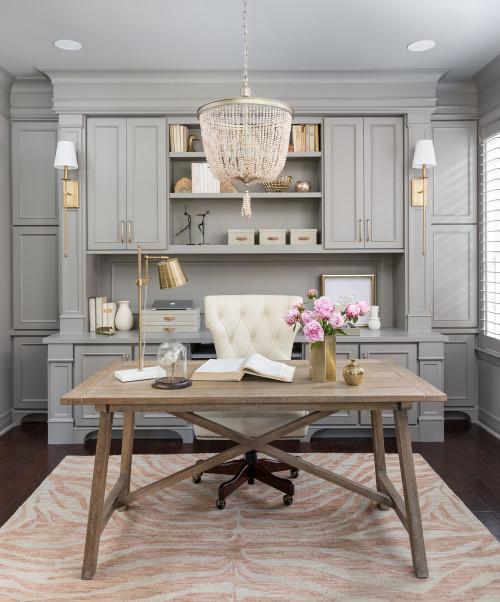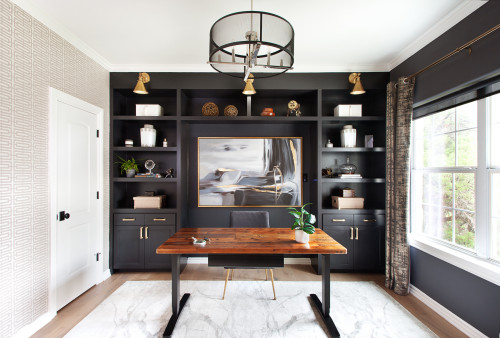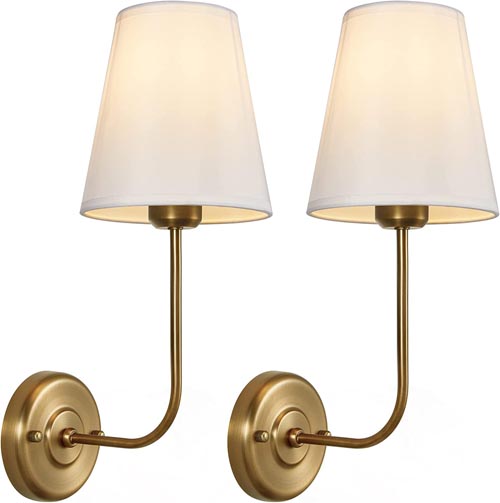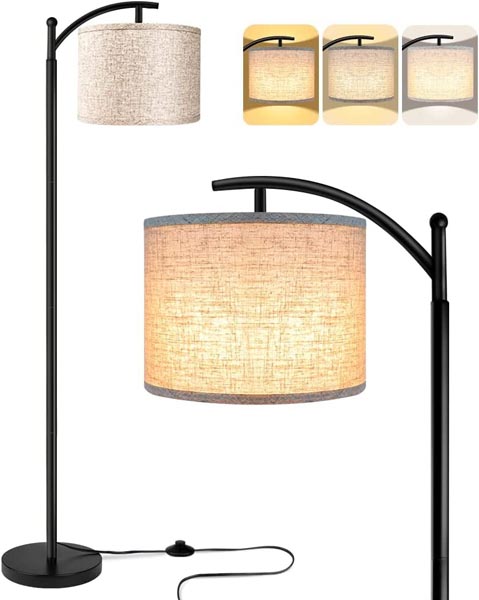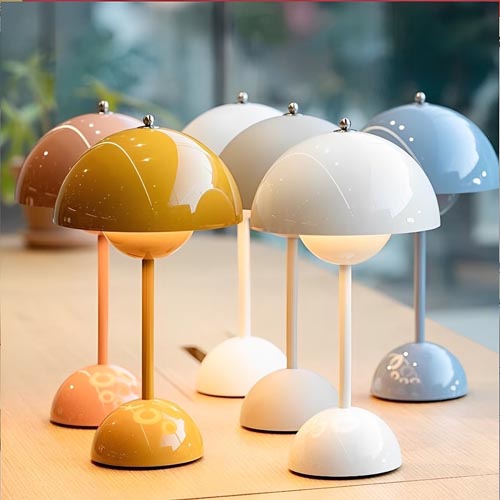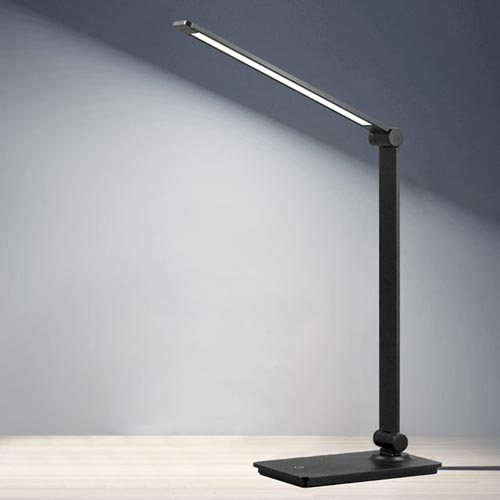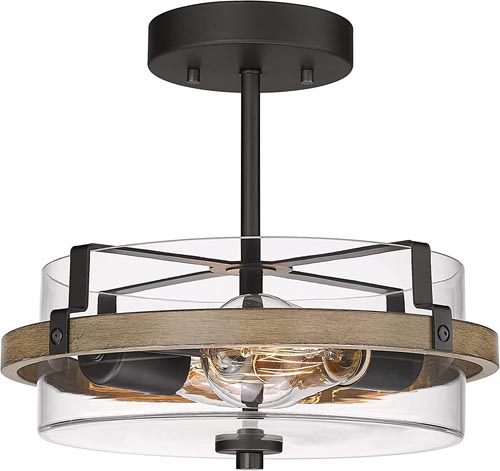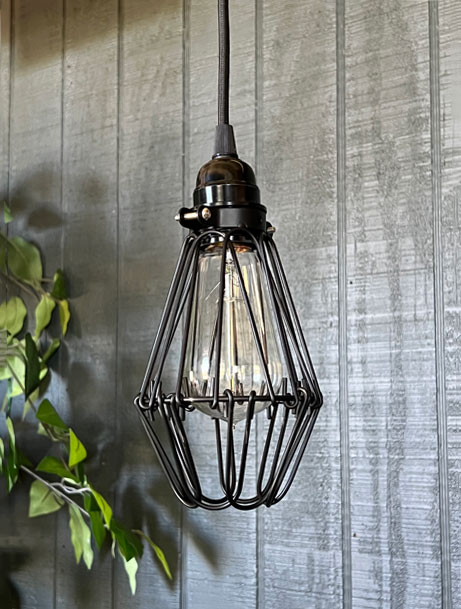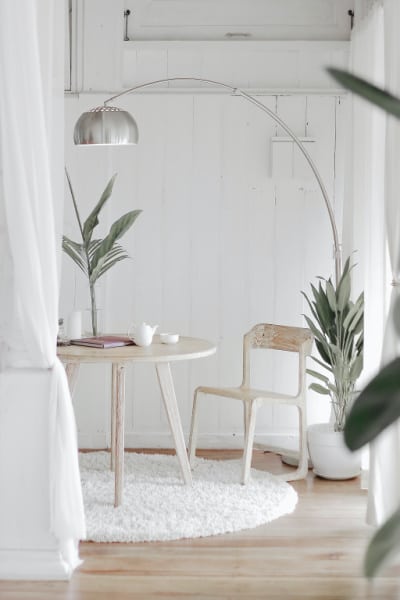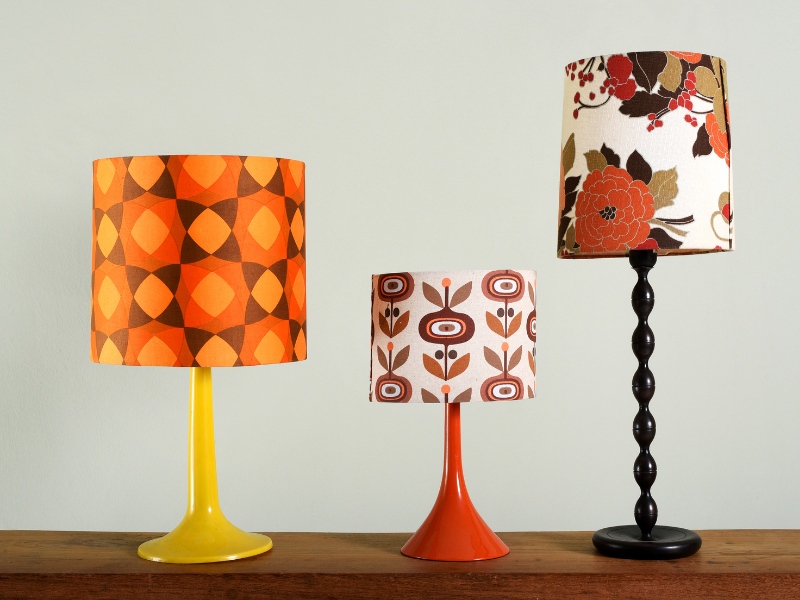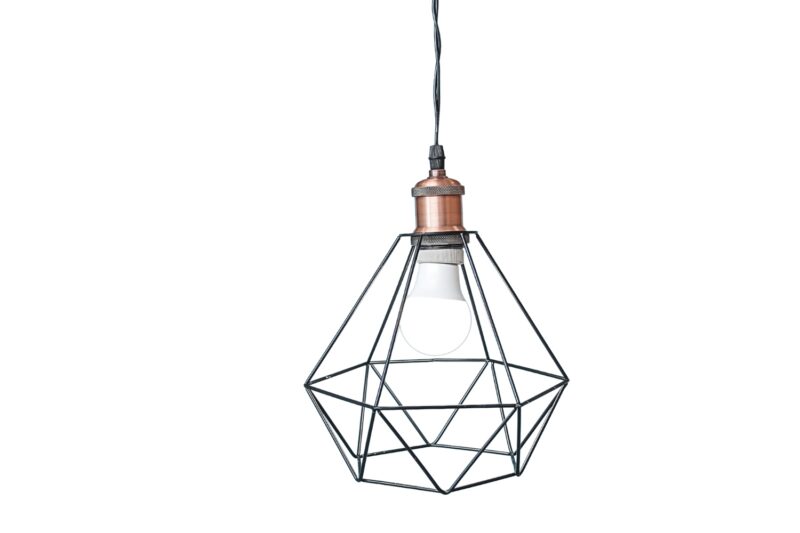Best Office Lighting for Computer Work
If you work remotely from home, you probably spend long hours looking at your computer screen and know that proper lighting in your home office is key. It can make or break your productivity and comfort.
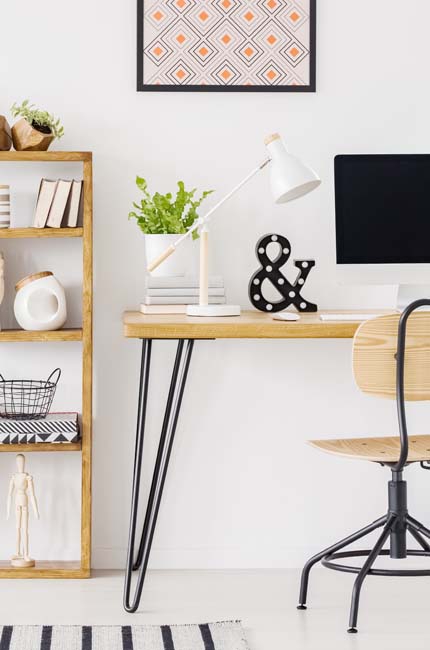
When it comes to lighting up your home office, here’s what you need to know to make sure you’re set up for success. *Note: Affiliate links may be used in this post. I may receive a small commission at no extra cost to you.
Table of Contents
Why Do You Need Good Home Office Lighting?
What Is the Best Lighting for Computer Work?
Is Working at a Computer in the Dark Bad for Your Eyes?
Should the Light Be in Front of or Behind the Computer?
What Color Light is Best for Computer Work?
Why Do You Need Good Home Office Lighting?
Staring at a screen all day can be a real pain in the eyes, (I couldn’t help myself) and if your home office lighting is poor, it can make it even worse.
Poor lighting can cause eye strain, headaches, and loss of focus. This can develop into Computer Vision Syndrome (CVS) which is a set of symptoms including dry, itchy, red eyes, blurred vision, and headaches. No one needs that when you’re trying to get a little work done.
Poor lighting is not the only culprit, harsh lighting can also have a negative impact. Harsh lighting not only places a glare on the screen but can also strain your eyes and mess with your body clock, – look up circadian rhythms and you’ll understand.
The good news is, proper lighting can make a huge difference. Lighting can influence productivity, help reduce eye strain, improve focus and make your office a more pleasant place to be. It’s all about finding the right type of lighting for your office space.
What Is the Best Lighting for Computer Work?
When it comes to the best lighting to use when working on your computer, setting up your home office is key. You want to make sure you have a nice balance of light in the room which includes natural light, ambient, task, and accent lighting.
Natural Light
The best light is natural light. You can never have enough natural light (unless we’re talking about the Natural Light beer – and we won’t even go there).
However, not everyone is lucky enough to have rays of sunshine flooding their home office. In fact, most home offices are tucked away in the dark corners of the basement, the attic, or the spare bedroom. Even if you have tons of natural light, you’ll still need extra lighting for your space.
Ambient Light
Ambient lighting is the main light source in your room. It’s usually the lighting you hang from the ceiling – overhead lights, recessed lighting, chandeliers – it’s the overall general lighting for the space. Every home office could use good ambient light as a base for the room.
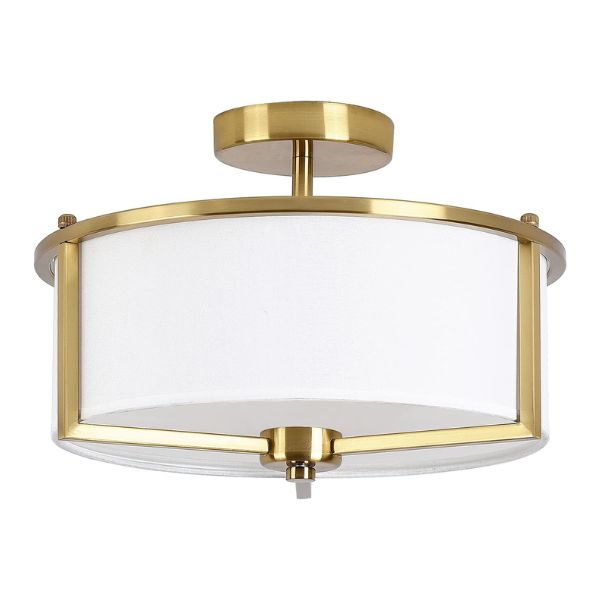
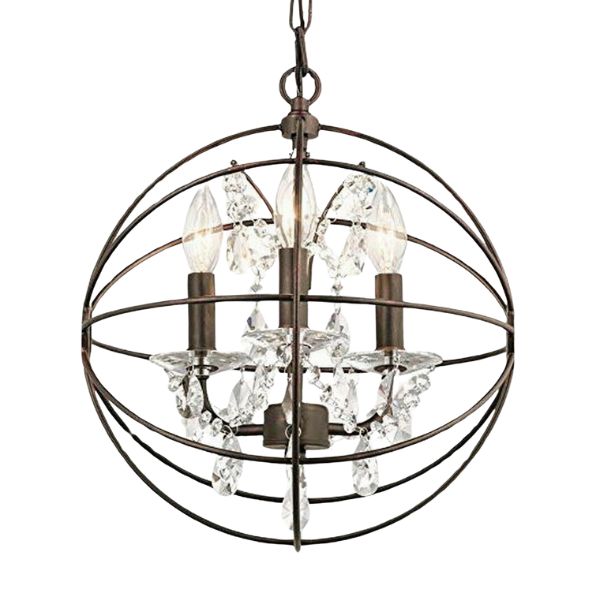
Task lighting
Task lighting is all about directional or targeted light for your workspace. It can help reduce eye strain by offsetting the brightness and color temperature (the blue light) of your computer screen. Examples of task lighting include a directional wall sconce, an adjustable desk lamp, or a pendant light that shines in a specific direction.
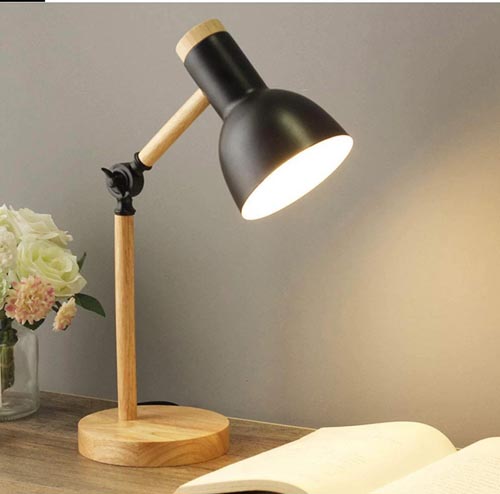
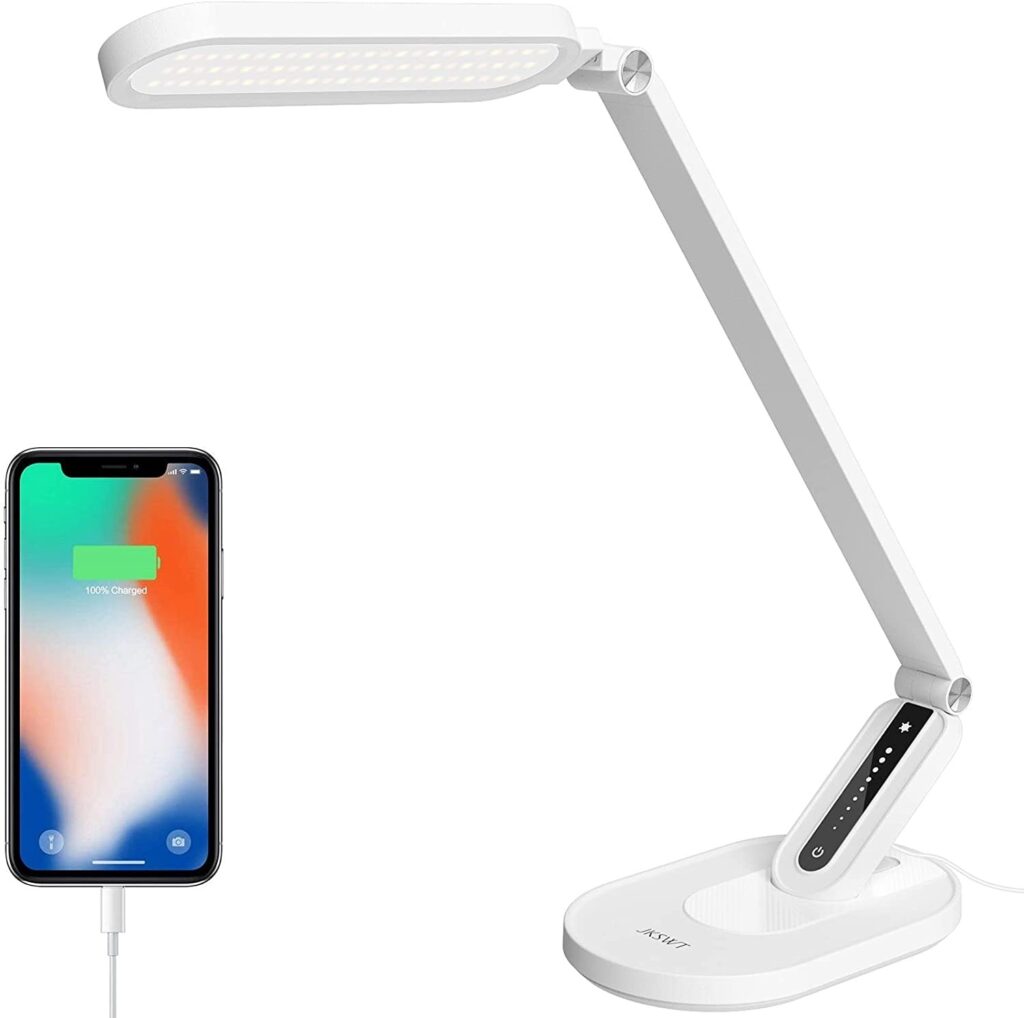
Accent lighting
Add some accent lighting to jazz up your office. This could include a decorative floor lamp, LED strip lights, or wall sconces that radiate light in all directions. Accent lighting may not be as important as ambient and task lighting when it comes to working at your computer, but it can be a fun way to add some personality to your office. If you’re looking to DIY a wall sconce installation in your office, you can check out my post on How to Install a Wall: Hardwired or Plug In.
While we’re at it, don’t forget about video conferencing. Having good lighting will help you see others on the screen. It will also make you look better on camera and make it easier for people on the other end to see you clearly. Let’s be honest, who doesn’t want to look better on camera?
Is Working at a Computer in the Dark Bad for Your Eyes?
Working on the computer in the dark isn’t necessarily harmful to your eyes, but it can cause some issues. Computer lights flicker and in the dark, it’s more pronounced, just like when you’re watching tv in the dark – the tv flickers. It’s the flickering light that makes your pupils constrict and dilate, not the light in the room, which can lead to eye strain and headaches.
If you find the flickering makes your eyes tired, use soft indirect lighting in the room, like a good desk lamp. This will help ease the strain on your eyes. It’s all about finding the right lighting by taking the brightness level, light color, and quality of lighting into consideration.
Since doing computer work in the dark isn’t necessarily harmful to your eyes, keeping the lights turned on or off can be a matter of personal preference. However, here’s a cheat sheet that can help you consider which you prefer. These aren’t words to live by, they’re just something to think about.
· Lights On: better ambiance, healthier, improved performance and productivity
· Lights Off: easier to focus on your computer, less environmental distraction
Should the Light Be in Front of or Behind the Computer?
To create the best setup for your workspace, position task lighting to the side of the computer screen instead of in front or behind. This way, the indirect light will shine on your desk rather than putting a glare on your computer screen.
What Color Light is Best for Computer Work?
Different light colors are valuable for different tasks. For example, warmer yellow or orange lights are ideal for relaxing. Cooler colors like whites and blues are good for working, waking up, and concentrating.
In reality though, when it comes to light sources, it’s all about preference. For me, warm white light bulbs are perfect for my home office. The light is white and bright but it doesn’t scream “Hey, I’m a bright white light!”, it’s a soft, comfortable white.
However, some people prefer cool white bulbs. Cool bulbs give off a bright light, but they have a blue tint which reminds me of fluorescent lighting – it’s great for some people, but it’s just not my thing. Like they say, to each his own.
Now that LED lights are commonplace, they’re probably the best option all around. LEDs allow you to adjust the light level and color of the bulbs according to the time of day. You should have them at their brightest during the morning when you want to stimulate alertness and be your most active. In the afternoon, dim lighting will help you be productive during stationary work.
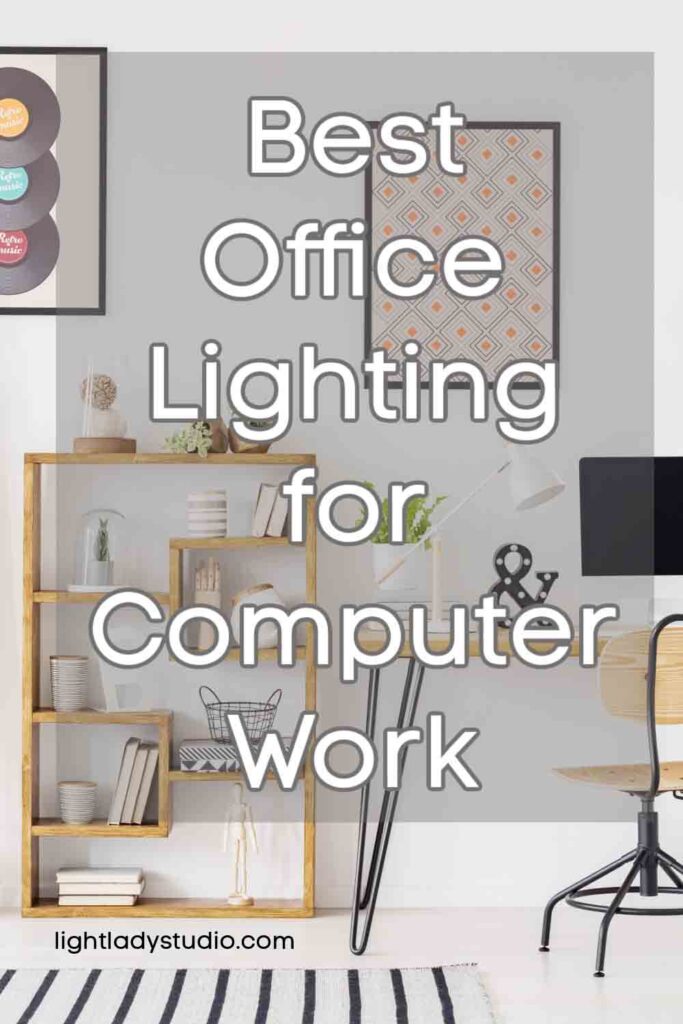
If you’re looking to add lighting to your workspace without having to add ceiling lights, you can check out my post on Creative Ideas for Lighting a Room Without Ceiling Lights.
Hopefully, this will help you get started as you improve the lighting in your home office and throughout your entire house! Remember, if you ever feel like your home needs a change, it could be as simple as revamping your lighting.
Until Next Time,
Cherie
Other Articles You May Be Interested In:
How to Swag a Light Fixture that Hangs from a Cord or a Chain
Shop the 60 Best Pendant Lighting Fixtures
27 Best Kitchen Light Fixtures for Low Ceilings
Creative Ideas for Lighting a Room Without Ceiling Lights

